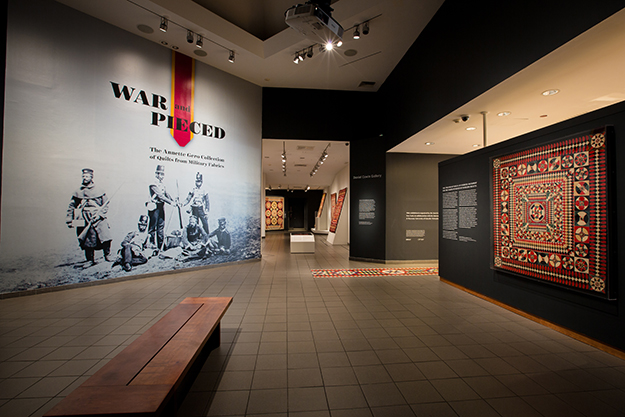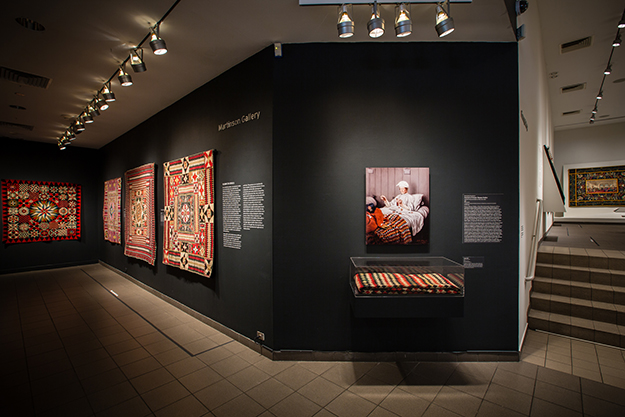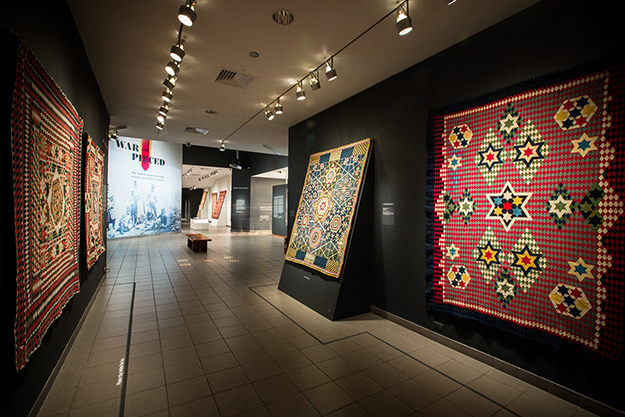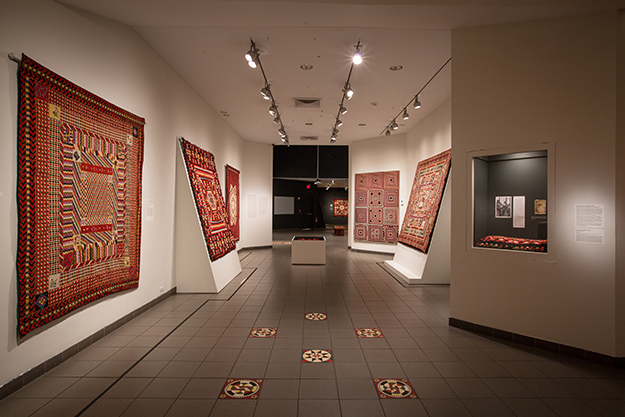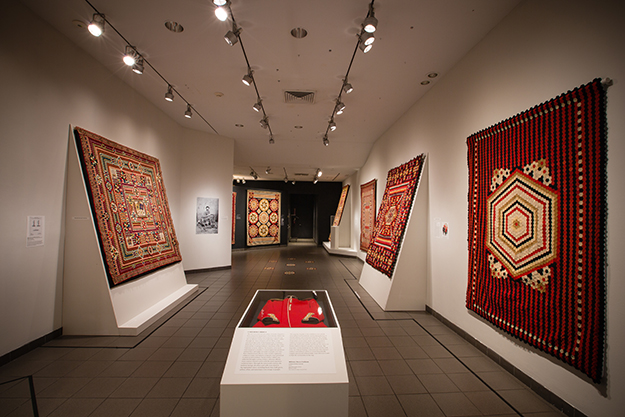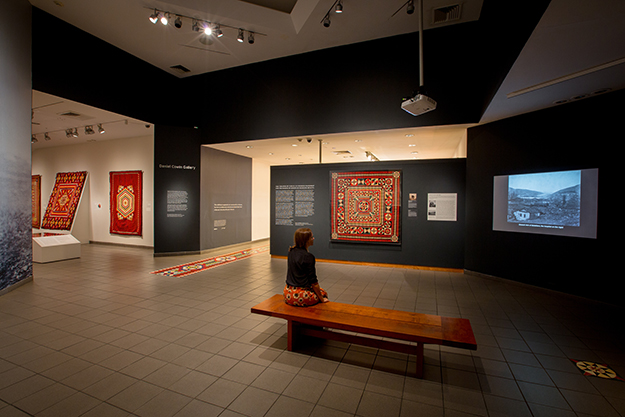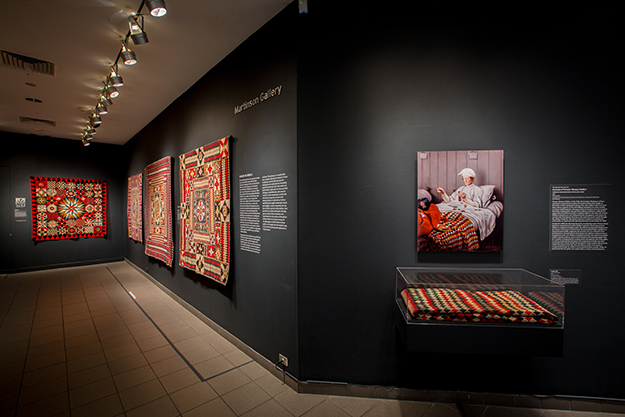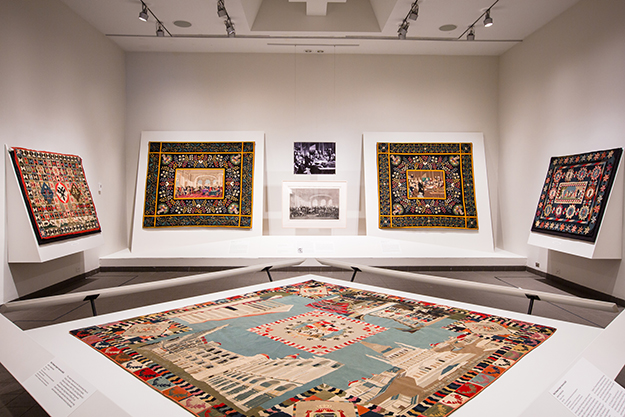Holy Roman Empire Intarsia Quilt
Artist unidentified

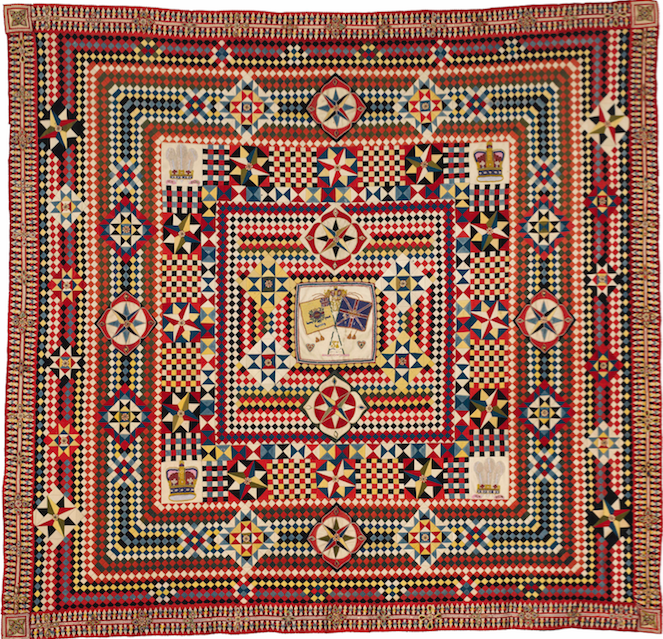

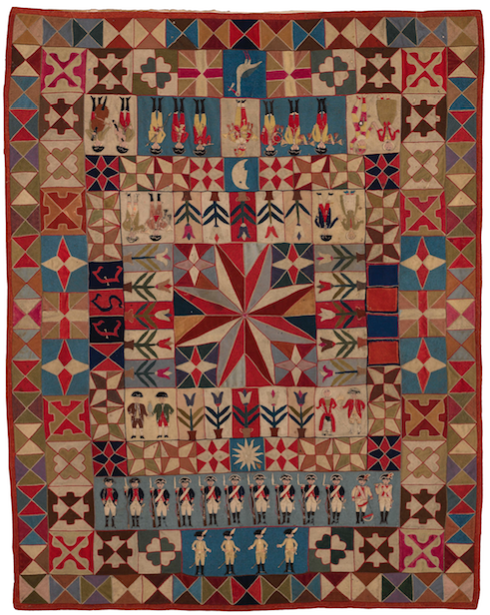
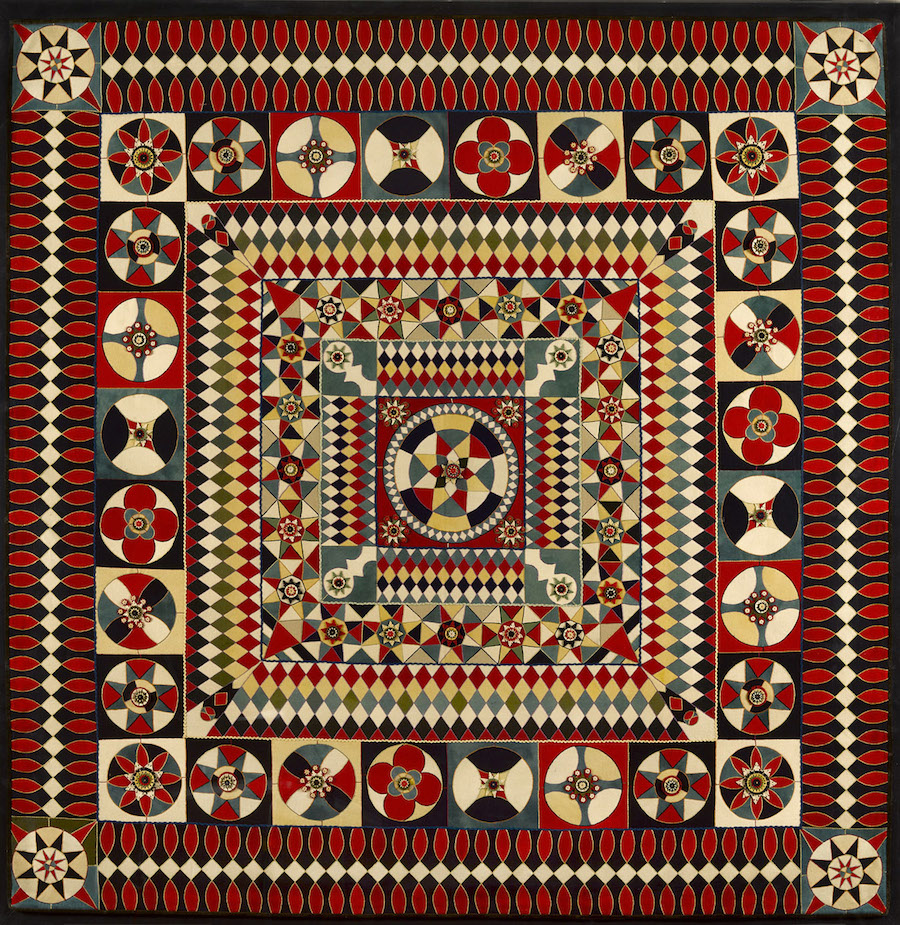
Organized by the American Folk Art Museum, New York, in collaboration with the International Quilt Study Center & Museum, University of Lincoln–Nebraska. Cocurated by Dr. Annette Gero, international quilt historian, author, and collector, and Stacy C. Hollander, Deputy Director for Curatorial Affairs, Chief Curator, and Director of Exhibitions at the American Folk Art Museum.
War and Pieced is the first exhibition in the United States to showcase the spectacularly complex geometric quilts made exclusively by men using richly dyed wools derived from British military and dress uniforms. Once termed “soldiers’ quilts” or “convalescent quilts,” the pieced textiles are most closely associated with the Crimean War as well as conflicts in India, South Africa, and other troubled regions of the British Empire during the nineteenth century. The exhibition further relates these military quilts to an earlier technique of pictorial inlaid or intarsia quilts, made with felted wools during the Prussian and Napoleonic wars beginning in the mid-eighteenth century. The visual virtuosity of the quilts, often incorporating many thousands of pieces no larger than one-inch square, assumes a deeper emotional resonance as we consider them within the matrix of war and its aftermath. The quilts are drawn primarily from the unparalleled collection of internationally acclaimed quilt authority Dr. Annette Gero, with additional examples from public and private collections, many never before on view.
The 240-page publication Wartime Quilts: Appliqués and Geometric Masterpieces from Military Fabrics (The Beagle Press, 2015) accompanies the exhibition and will be available through the American Folk Art Museum Shop beginning in September 2017.
The exhibition will be presented by the International Quilt Study Center & Museum, University of Lincoln–Nebraska from May 25–September 16, 2018.
Installation photos by Olya Vysotskaya.
War and Pieced in Context
Julia Bryan-Wilson on Gender, Politics, and Textiles
Families and Folk Art: Artful Appliqué
Dialogue + Studio: Combat Paper
Dialogue + Studio: Bookbinding with Combat Paper
Dialogue + Studio: Intarsia Patterning
Critical Walk-through: Katherine Knauer on the Politics of Quilting
Families and Folk Art: Inspiring Intarsia
Families and Folk Art: Pattern, Shapes, and Symbols
Image credits: Holy Roman Empire Intarsia Quilt; artist unidentified; Prussia or Austria; 1846–1851; wool, with embroidery thread; intarsia; hand-appliquéd and hand-embroidered; 101-1/2 x 101-1/2 in.; International Quilt Study Center & Museum, University of Nebraska-Lincoln (2011.068.0001).
Soldier’s Quilt with Incredible Border; artist unidentified; India; c. 1855–1875; wool from military uniforms, with beads; hand-applied beadwork and layered-appliquéd border; 82 x 88 in.; The Annette Gero Collection. Photo by Tim Connolly, Shoot Studios.
Beaded Soldier’s Quilt; artist unidentified; India; c. 1860–1870; wool, with beads; inlaid; hand-appliquéd and hand-applied beadwork; 63 x 63 in.; The Annette Gero Collection. Photo by Tim Connolly, Shoot Studios.
Intarsia Quilt with Soldiers and Musicians; artist unidentified (initialed “J.S.J.,” Prussia); c. 1760–1780; wool, with embroidery thread; intarsia; hand-appliquéd and hand-embroidered; 55 x 43 in.; The Annette Gero Collection. Photo by Tim Connolly, Shoot Studios.
Soldier’s Quilt; artist unidentified; probably India; c. 1850–1880; wool, probably from military uniforms, with embroidery thread, rickrack, and velvet binding; inlaid; layer-appliquéd and hand-embroidered; 67 x 66 in.; Collection American Folk Art Museum; gift of Altria Group, Inc.; 2008.9.1. Photo by Gavin Ashworth.
This exhibition is supported in part by Joyce Berger Cowin, the David Davies and Jack Weeden Fund for Exhibitions, the Ford Foundation, Just Folk: Marcy Carsey/Susan Baerwald, public funds from the New York City Department of Cultural Affairs in partnership with the City Council, the New York State Council on the Arts with the support of Governor Andrew M. Cuomo and the New York State Legislature, and Roberta and Ralph S. Terkowitz.

- Roberta Smith
This exhibition is supported in part by Joyce Berger Cowin, the David Davies and Jack Weeden Fund for Exhibitions, the Ford Foundation, Just Folk: Marcy Carsey/Susan Baerwald, public funds from the New York City Department of Cultural Affairs in partnership with the City Council, the New York State Council on the Arts with the support of Governor Andrew M. Cuomo and the New York State Legislature, and Roberta and Ralph S. Terkowitz.
